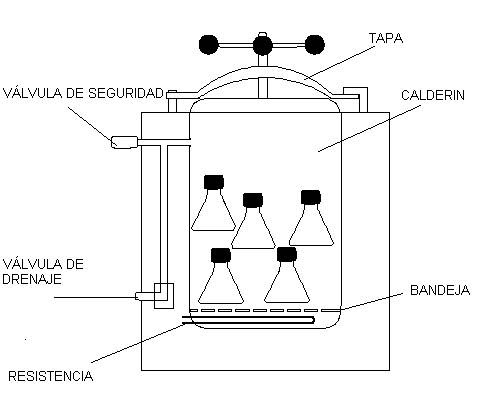Autoclave
In the microbiology laboratory sterile material and solutions must be used so that the results obtained are for the microorganism or microorganisms that are in the sample under analysis and not the contaminants that come from the culture medium or the materials, which can develop and distort the tests. To this end before starting the practical, the culture media and the material that is going to be used later, are sterilized. Sterilization is understood to be the procedures through which all the forms of living microorganisms are eliminated through sterilization, whether they are pathogenic or not, which are in the material. This sterilization is usually carried out with moist heat in devices called autoclaves.
What is the autoclave?
The autoclave is a common instrument in Microbiology laboratories. It is a closed system where steam is produced, when water is subjected to high pressure, an atmosphere, when the water reaches a temperature of 121ºC, which causes enzyme denaturation, and this then kills the microorganisms and destroys the spores. Normally, sterilization takes place at 121ºC and it lasts for 20 minutes.
How the autoclave works
There are different phases involved in the complete sterilization process in an autoclave:
- Purge phase: As the resistance heats the water at the bottom of the boiler, steam is produced that moves the air around, pushing it through the purge valve that is open. This phase ends when the sterilization temperature is reached.
- Sterilization phase: Once the purge valve has been closed and the previously selected sterilization temperature is reached, the sterilization process begins.
- Exhaust phase: Once the sterilization process has finished, the heating resistor stops working and producing steam and the pressure and the temperature of the boiler gradually starts to drop.

A few points to take into consideration to sterilize the material properly
-
-
- All the liquid must be heated at the selected temperature for the adequate amount of time so that the sterilization of the growth media is effective.
- The hermetically sealed containers must be put in the autoclave without the top being fully on, to let the steam in during the process. When the autoclave is emptied after sterilization these containers will be closed completely.
- Sterilization takes longer in the empty containers than those that have liquid inside them.
-
Educational Innovation Activities Assistance- Vice Rector for Academic Affairs/ Enquiries and technical matters – Tel: 96 522 2059 –